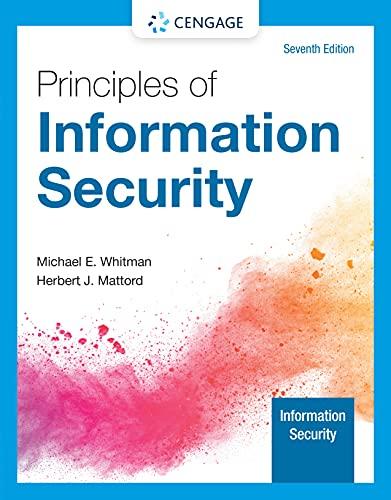I. Define VPN as a private and secure network connection between systems that uses the data communication
Question:
I. Define VPN as a private and secure network connection between systems that uses the data communication capability of an unsecured and public network. VPNs are commonly used to securely extend an organization’s internal network connections to remote locations beyond the trusted network.
II. Discuss the three VPN technologies that the VPNC defines:
• A trusted VPN, or legacy VPN, uses leased circuits from a service provider and conducts packet switching over these leased circuits.
• A secure VPN uses security protocols and encrypts traffic transmitted across unsecured public networks like the Internet.
• A hybrid VPN combines the two, providing encrypted transmissions (as in secure VPN) over some or all of a trusted VPN network.
III. A VPN that proposes to offer a secure and reliable capability while relying on public networks must address:
• Encapsulation of incoming and outgoing data, wherein the native protocol of the client is embedded within the frames of a protocol that can be routed over the public network as well as be usable by the server network environment.
• Encryption of incoming and outgoing data to keep the data contents private while in transit over the public network, but usable by the client and server computers and/or the local networks on both ends of the VPN connection.
• Authentication of the remote computer and, perhaps, the remote user. Authentication and the subsequent authorization of the user to perform specific actions are predicated on accurate and reliable identification of the remote system and/or user.
IV. Point out that VPN support is built into most Microsoft server software, including 2012, and client support for VPN services is built into most Windows clients.
Step by Step Answer:

Principles Of Information Security
ISBN: 9780357506431
7th Edition
Authors: Michael E. Whitman, Herbert J. Mattord





